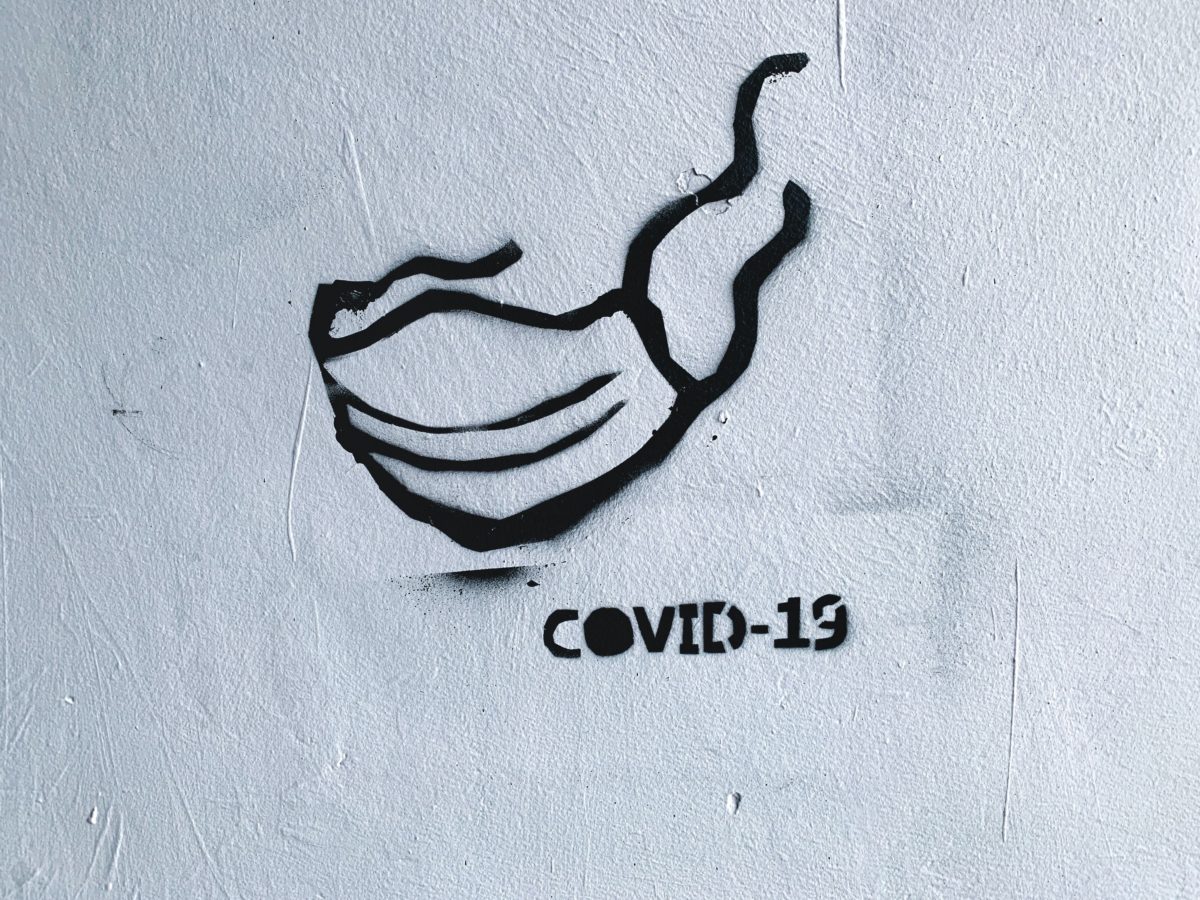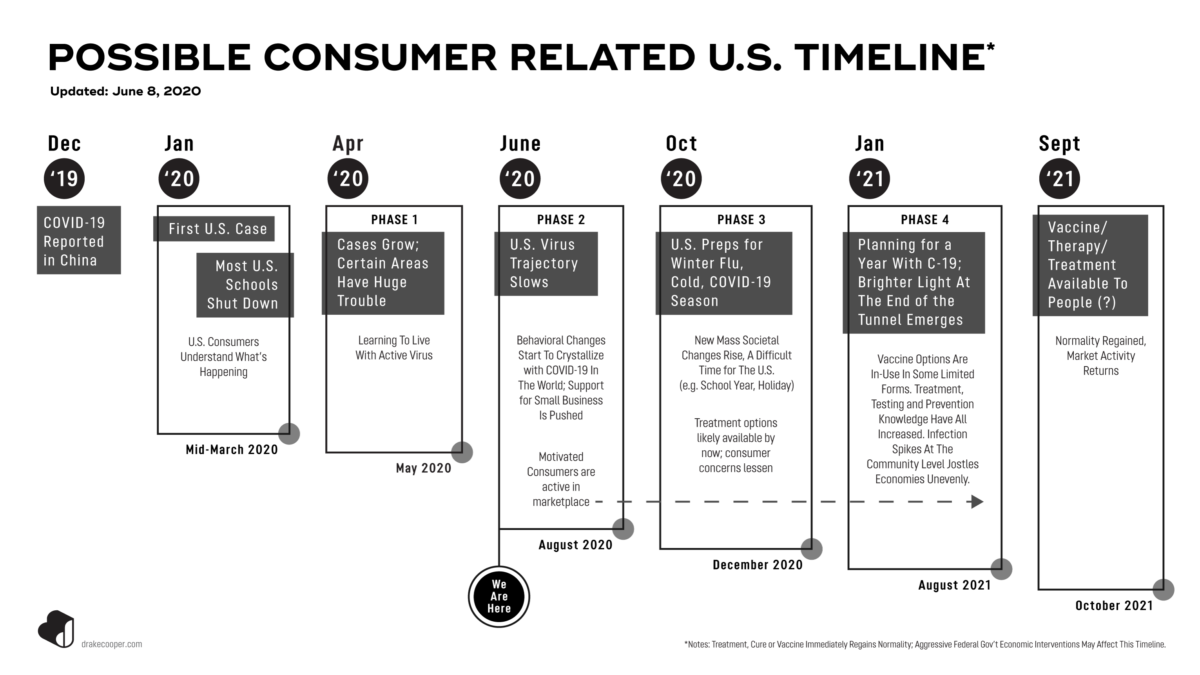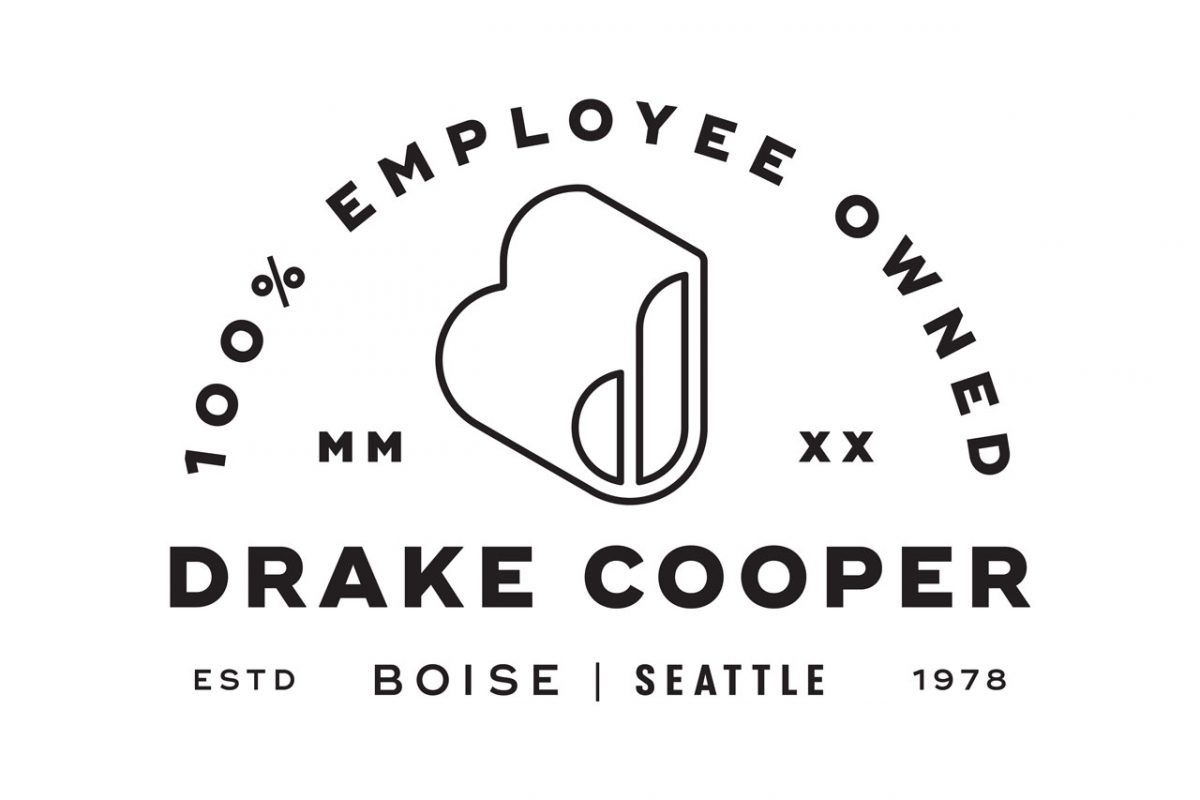How Challenging Times Impact Consumer Behavior

We all approach the world differently. In the face of change, people think differently and people act differently. COVID-19 is revealing this more and more with each passing week. As we revisit our highly-read React To / Realize framework for brands, it’s people’s different worldviews and actions surrounding C-19 that we’ve seen marketers grapple with the most — something we expect to continue throughout the summer.
We appreciate the support and collaborative conversation the React To / Realize framework has generated since the coronavirus pandemic began. We’re finding that organizing the consumer-related developments unfolding now in these two categories is helpful. To recap, there are many trends consumers and brands need to quickly react to; these are largely short term things. Then there are a few things we realize we need to change in our society as a result of C-19; these are long term things that brands should impute into their marketing and messaging going forward.
We continue to try to make sense of things through this framework. But first, let’s start with Americans’ differing attitudes toward C-19.
Today, about fifty percent of Americans fear getting the virus, while fifty-percent don’t. Roughly seventy-five percent of people would get a C-19 vaccine while twenty-five percent would not. Around one-third of Americans always wear a mask in public while another one-third never do. These opposing actions are largely why there’s a difference between reopening and re-emerging — the former is what a government will do, the latter is what people will do.
What’s going on and why the disparity? Yes, there are some partisan divides, but that doesn’t entirely explain things.
At the agency we were curious about this, so with our friends at Scio Motus, we analyzed two groups of people: those highly concerned about C-19 and complying with government and data-led mandates and those who are unconcerned with C-19 and go about a life largely disregarding government instructions.
These groups are easy to find in society. So we analyzed their public posts and used AI technology to evaluate their collective personality traits based on the famous OCEAN model, which can show what innate personality traits are stronger within a person or groups of people.
Interestingly, people in both groups possessed two matching characteristics. They each had high levels of intellect — which means they rationally use information to come to an opinion. They each also showed high levels of authority-challenging — meaning they both have dissatisfaction with some type of authority.
Beyond these two characteristics, there were stark differences between the two groups.
People who are concerned with C-19 and follow government/health instructions across their life have:
-high levels of sympathy: they feel sadness around the misfortunes of others (e.g., C-19 illness and worse greatly impacts their feelings)
-high levels of cautiousness: they are careful to avoid potential problems (e.g., adhere to CDC guidelines)
-high levels of self-efficacy: they believe in their ability to produce results from their personal efforts (e.g., wearing a mask)
-low levels of excitement seeking: they don’t naturally have a need to pursue exciting experiences (e.g., sheltering in place doesn’t weigh on them strongly)
Conversely, the people who will march forward and largely disregard C-19 societal instruction have:
-high levels of assertiveness: they are confident and self-assured (e.g., they stand up for the society accessibility they need)
-low levels of emotionality: lower emotional reaction to stimulus; they don’t experience strong internal emotions from external events (e.g., C-19 stories of illness and fatalities don’t trigger their emotions)
-low levels of cooperation: they prioritize personal interests over collective interests (e.g., if they want to go out, they’re going to go out)
-low levels of trust: they don’t trust others to do what they say they’ll do (e.g., even if data levels are hit they may not feel confident things will change)
All of us have these personality factors within us, they just exist at varying degrees. But each group often wants the same products or services so the marketer needs to work with all groups if they are to maximize their audience.
By following the React To / Realize areas we write about below in this post, a marketer can attempt to satisfy both ends of attitudes while also connecting with the many people who exist somewhere in the middle.

Our client base is largely West Coast where currently overall cases per 100k residents are lower. This could result in overall higher indexing in the not-cautious behavior area. But a sad, key area to watch is the community level spikes and infection rates. When asked what metrics the Federal Reserve is following to guide its future, Chairman Jerome Powell said:
“You know, at the moment, the thing that matters more than anything else is the medical metrics, frankly. It’s the spread of the virus. It’s all the things associated with that. An outbreak at a local event or in a community will sadly change economies — no matter their size — within weeks.”
So it’s our recommendation that brands maintain contingency planning scenarios until a vaccine is available. Our hope is that there is some form of vaccine circulating this winter in limited distribution with full distribution by early fall 2021.

What We Are Realizing:
We currently see two long term trends developing which brands should look to impute into their messaging and business.
Realization #1: Hygiene & Safety Become A Priority That Consumers Watch For

The coronavirus has sadly made America realize our hygiene standards have been too low. Stepping back from the virus itself we see other things. For example, parents are told to expect that their young children are to be sick basically every month once they start attending daycare or school. We’ve always just accepted this. Why? Yes, kids will get sick a lot. But does it have to be that often? What if door handles at schools were made of copper instead of steel? Viruses die on copper, but they live for days on metal. If door handles and sinks at schools were made of copper it would mean by recess time any morning germs would be gone. If they’re metal, germs from 3 days ago are still lurking.
Once we look around we see examples everywhere; America hasn’t placed much value on hygiene. Because of this, things like masks are new — and they feel very foreign.
Kantar has been smart to say that brands need to “Signal Hygiene.” McKinsey agrees and Ipsos recently put some numbers behind it. In their newly formed Consumer Health and Safety Index, the firm reports that 55% of consumers want companies to spend more effort on health & safety and that such protocols are four times more important to their shopping behavior than customer service or product availability. In fact, this summer six out of 10 consumers say they will stop shopping at retailers who are not taking health & safety measures seriously.
What are some examples of signaling hygiene? At about 16 minutes into their “Reopen with Confidence” presentation Ipsos shows a helpful organization of the things that brands, mostly retail, can do regarding hygiene. They isolate what’s important along with what things most encourage people to come back and buy again.

It turns out there are things that have become table stakes: employees in masks, hand sanitizers at entrances, and social distancing markers. Beyond this, however, there are a handful of things that are differentiators and propel revisitation — the top one: employees visibly disinfecting customer touchpoints. The greater the effort a brand can put toward these differentiators the more people will reward that brand with returned visits.
Interestingly, this entire situation gives brands some control. The great thing about our economy is that for the most part, people can choose what they buy; we have a choice and we vote with our dollar. When people pick the brand they feel better about it puts brands more in control of their destiny. Additionally, a notable portion of people say they will pay 10% more with retailers who are doing a superior job on health & safety (per Ipsos).
Realization #2: People Seek A ‘Removed Urban’ Living Experience

The longtime promise of technology being able to create physical unattached freedom in life is now becoming more of a reality. As Microsoft’s CEO said recently, “We have experienced 2 years’ worth of digital transformation in 2 months.” What’s been interesting to see is how changes actually take two ingredients — the technological ability to do it and the social acceptance to allow it. That second one has been slow, it turns out, until now.
Many in real estate are predicting a rise to the suburbs. We agree. For years the suburbs have had so much going for them — space, security, value. But a huge hindrance is a long commute. For many people, this now changes. Completely remote work or acceptance of working partially from home eliminates, or greatly lessens, time-in-car.
But the draw of the city is still strong. Aging Boomers and Gen Xers will want close proximity for great health care, and many people want uncomplicated major airport access and large venue ability even if they use both a little less. Put it all together and places where some of our clients offer homes — like Tehaleh, Estrella, and where CBH Homes builds — are wonderful choices because you have an urban experience whenever you wish yet live among more space. With less pressure for many people to physically put themself into a city every day for work, these areas will be even more desirable.
Globally, cities have experienced tremendous growth. The same is true in the US. But there is a caveat here — 60 percent of Americans currently live in places of 50,000 population or less (per US Census). We often find this little bit of data surprises people, but it explains a lot about our country once you’re aware of it. In this case, a vast network of possible places to live exists in the US complete with modern retailers and services — because the majority of our country already lives this way. If brands can acknowledge consumers will be seeking more of a happy, healthy home life, enjoying more things from home, and trying to control their own destiny a little more from their house, they will fare stronger going forward.
This summer community-level spikes may, sadly, bring a time of extreme variance across the country. As we move through this time, brands should seek to evaluate what long-term strategies they can do to bring health & safety to people. Beyond this, many brands will have implications for a forthcoming world where more people build their lives in a removed urban type of environment. Adding value and supporting these realized trends well must go beyond marketing messages — so it’s best to begin now.
RESOURCES
During this time of C-19, what consumers react to and what they realize is a continuously evolving collection of things. In addition to Drake Cooper’s ongoing analysis of the media environment, below are the key resources that our agency is keeping up with to best monitor the situation.
Gallup: Ongoing US public opinions of coronavirus
Nielsen: Ongoing tracking of the impact of coronavirus across media, retail and consumer packaged goods
WARC (via Drake Cooper access): Ongoing insight for marketing in the COVID-19 crisis
McKinsey: Ongoing tracking of US and Global market sentiment regarding COVID-19
Ads of the World: Ongoing curation of ads from around the world relating to coronavirus
Authors:
John Drake, Chief Strategy Officer
Jamie Cooper, CEO, President
Sean Young, Story Director
Molly Brunett, Account Planner
Maria Walker, Director of Data & Communication Strategy
Drake Cooper Becomes 100% Employee Owned
BOISE, Idaho — (December 16, 2020) — Drake Cooper, one of Idaho’s oldest advertising agencies, has 50 new yet very familiar…

Our Creative Advertising Services
-
Corporate Positioning, Brand Evolution & Strategy
Mission/Vision Development, Strategic Counsel For Marketing/Branding Challenges
-
Market Research
Quantitative, Qualitative, Ethnography, Consumer and/or Internal Stakeholder Insights
-
Creative Campaigns
Brand Campaigns, Product Launches, Full Funnel Marketing Efforts
-
Brand Design
Brand Guides, Style Guides, Branding Elements, Logos
-
Web Development and Digital Applications
Open-Source Platforms, Enterprise WordPress, eCommerce, AR, Emerging Technology
-
Media Strategy, Planning & Buying
Media Planning, Media Plan Development, Media Buying, MMM, Online and Offline
-
MarTech
AI, Responsible Consumer Data Management, Ad Ops, Marketing Software
-
Analytics
Dashboards, Insights, Business Metrics Evaluation, ROI Reporting, Data Warehousing
-
Content Creation
Videography, Photography, Short-Form Video, Organic Social Content
-
Findability™
SEM, SEO, GEO (AI Generative Experience Optimization), Voice Search